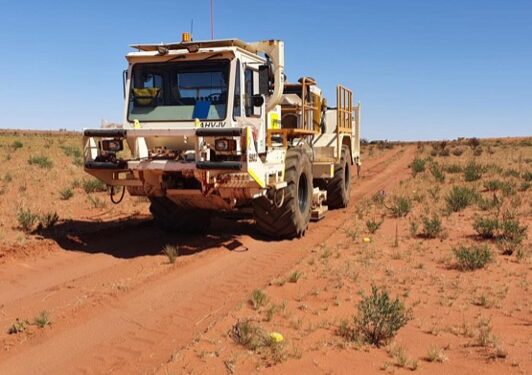Two Rigs Planned To Undertake Follow-Up Programme
Magnetic Resources (ASX:MAU) has identified multiple both thick and high-grade zones have been located at the Lady Julie project in Western Australia.
The promising anomalous gold zones are still open to the north and south, west and down dip and are currently being followed up with 29 RC holes for 3200m averaging 110m hole depth mainly within the two km long Lady Julie North 1 target zone.
The results provided The best and most consistent shallow intersections to date at Lady Julie North with 20m at 2.6g/t from 52m including 8m at 5.8g/t from 52m in MLJRC296, 36m at 1.7g/t from 20m including 4m at 13.3g/t from 24m in MLJRC307, 32m at 1.4g/t from 44m in MLJRC293, 32m at 1.3g/t from 52m including 8m at 4.2g/t from 56m in MLJ298 and 41m at 2.6g/t gold from 31m including 15m at 4.2g/t from 52m in a previously drilled MLJRC162.
Drilling showed that the southern one km of the two km long Lady Julie North 1 area is strongly mineralised. The amplitude of the soil anomaly containing the 41m at 2.6g/t form 31m in MLJRC162 is 50ppb.
There are several other similar soil geochemical anomalies that have not been drilled tested adequately and are within the 1km northern part of Lady Julie North1 target.
Drilling has already started here and further results are awaited. In addition, a 1.9km long area directly north of Lady Julie 1 has had a detailed 50m x 50m soil sampling completed and assay results are awaited.
This soil survey is also encompassing some historical drilling with an intersection of 13m at 2.1g/t from 66m in RFC014 within Lady Julie 4
A recent 2D seismic survey combined with results from recent major drill programmes as well as historical drillings results have led to the interpretation of 15km of gold targets in 10 areas within HN5, HN6, HN9 and Lady Julie.
The best-looking target so far besides the 3km-long HN9 mineralisation, is Lady Julie North (3.9km long) At Lady Julie North 1 there are many mineralised intersections including the outstanding intersection of 41m at 2.6g/t Au from 31m including 15m at 4.2g/t from 52min MLJRC162. This zone between the two thrusts is very prospective and there are numerous NS workings, mineralised drillholes and anomalous soil geochemical areas.
The eight thrust zones that come to surface continue to the north and south over an extensive 6km length and shallow RAB and or soil geochemistry is being planned to help outline any further anomalous gold areas worthy of follow up drilling. Other previously drilled areas include HN9 Thrust 2, which is positioned on Thrust 2. At Lady Julie North 1 and 2, the targets are compelling because they are associated with the two parallel Thrusts 7 and 8.
Interestingly, both the mineralised targets at HN9 and Lady Julie North appear to straddle two thrusts, with HN9 being a major 3km-long mineralised zone.
Two RC rigs are now planned with a programme of 104 RC drillholes for 9,892m, following up the new assays reported on Lady Julie North 1 and HN5 West, which is designed to test and extend all ten targets shown with the aim of ultimately converting to an Indicated Resource.
There are now at least four discernible mineralised lodes recognised that mostly dip shallowly around 20–30° to the east and plunge shallowly to the northeast within the Central Thickened zone.
There are at least four stacked thickened lodes with some very thick intersections including 104m at 0.82g/t from 8m in MHNRC582 including 20m at 2.23g/t from 95m and 70m at 0.49g/t from 13m in MHNRC541.
These multi-stacked thickened lodes show similarities with the adjacent Wallaby, Sunrise Dam and Jupiter major gold deposits. More results are pending for this area and further drilling is in progress to the NE where it remains open. In addition, a thick intersection of 76m at 0.72g/t from 24m in MLJRC293 at Lady Julie is being examined for its multi stacked depth potential.
This Central Thickened Zone crosscuts the NNW-trending near-surface flat-dipping mineralisation and may represent a blowout zone at the intersection of the NNW shear zone with NE-trending porphyries and dolerites, where four separate shallow-dipping porphyry zones coalesce and thicken.
Following on from these exciting new results and outlining of targets associated with the thrust zones, a large drill programme of 104 RC drillholes for 9,892m testing the ten target areas.
For further information please visit: https://magres.com.au/












